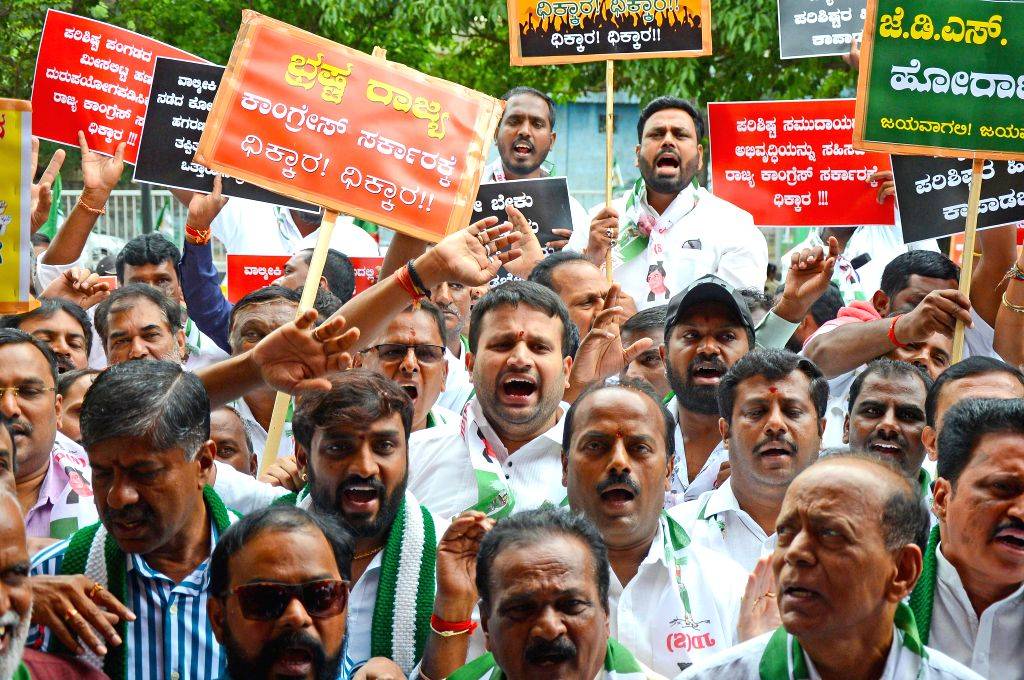Torres Scam Exposed: ₹22 Crore Fraud and Lessons in Financial Vigilance
Introduction India’s financial sector faced another jolt with the exposure of the Torres Scam, a sophisticated financial fraud that resulted

In a devastating blow to Karnataka’s tribal communities, the Valmiki Development Corporation became the center of a massive embezzlement scandal involving ₹94 crore that was intended for the welfare and development of Scheduled Tribes. The fraud, which came to light in the most tragic of circumstances following the suicide of a corporation official, revealed a systematic looting of funds that were meant to uplift some of the state’s most marginalized communities. This case represents not just financial fraud, but a profound betrayal of public trust and the theft of opportunity from thousands of vulnerable citizens.
The fraud involved multiple levels of officials and collaborators:
The primary mastermind(s) utilized their positions of trust within a government-established corporation specifically created to serve tribal populations, exploiting both their authority and the limited oversight of funds intended for social welfare schemes.
The Valmiki Corporation scam operated through several sophisticated mechanisms:
Corporation officials bypassed established protocols to transfer large sums to external accounts without proper authorization or documentation. These transfers often occurred in rapid succession to obscure the money trail.
Funds were allocated to non-existent beneficiaries or projects, with paperwork falsified to create the appearance of legitimate disbursements for tribal welfare programs.
Money was channeled through a network of shell companies and fake contractors who existed primarily on paper, with funds ultimately finding their way to personal accounts of the conspirators.
Approval documents were falsified, often using rubber stamps and signatures obtained under false pretenses or simply forged to create an illusion of proper oversight.
Financial records within the corporation were manipulated to hide discrepancies, with entries adjusted to match falsified expenditure reports.
The fraud continued undetected for an extended period due to inadequate auditing procedures and the exploitation of trust placed in officials managing welfare funds.
The real victims of this scam were Karnataka’s tribal communities:
The ₹94 crore diverted represented critical development funds that could have transformed thousands of lives in a population already facing significant socioeconomic challenges. Beyond the immediate financial impact, the scam further eroded trust in government welfare schemes among tribal communities who have historically faced marginalization and neglect.
The scam came to public attention through tragic circumstances when a corporation official died by suicide, leaving behind a detailed note that exposed the fraudulent operations. The note reportedly contained:
This final act of conscience triggered investigations that might otherwise have been delayed or prevented entirely, bringing to light the massive misappropriation of funds.
Several warning signs were apparent but ignored or suppressed:
The scam revealed critical failures in oversight mechanisms:
To prevent similar scams affecting welfare funds:
Following the explosive revelations:
REMAIN VIGILANT about welfare schemes and report any discrepancies in implementation to appropriate authorities, including district collectors and tribal welfare departments.
VERIFY any communication about tribal welfare schemes through official government channels rather than through intermediaries claiming to represent government agencies.
DEMAND TRANSPARENCY in the implementation of tribal welfare programs by requesting documentation and proper identification from officials handling such schemes.
REPORT suspicious activity related to welfare funds to the state anti-corruption bureau or the central vigilance commission without delay.
Introduction India’s financial sector faced another jolt with the exposure of the Torres Scam, a sophisticated financial fraud that resulted
Background of the Alleged Fraudster Name: Thirumalaiammal My Ramalingam (aka T.M. Ramalingam) Location: Ganapathipalayam, Coimbatore District, Tamil Nadu Allegation: Repeat
Introduction The NEET (National Eligibility cum Entrance Test) is one of India’s most prestigious and competitive medical entrance exams. However,
We believe that by sharing knowledge and raising awareness, we can build a more secure financial future for everyone. Explore our articles, share our content, and join us in the fight against fraud.
Copyright © 2025 40frames – Exposing Fraud, Protecting Indians
We use cookies on our website to give you the most relevant experience by remembering your preferences and repeat visits. By clicking “Accept All”, you consent to the use of ALL the cookies. However, you may visit “Cookie Settings” to provide a controlled consent. Privacy Policy.